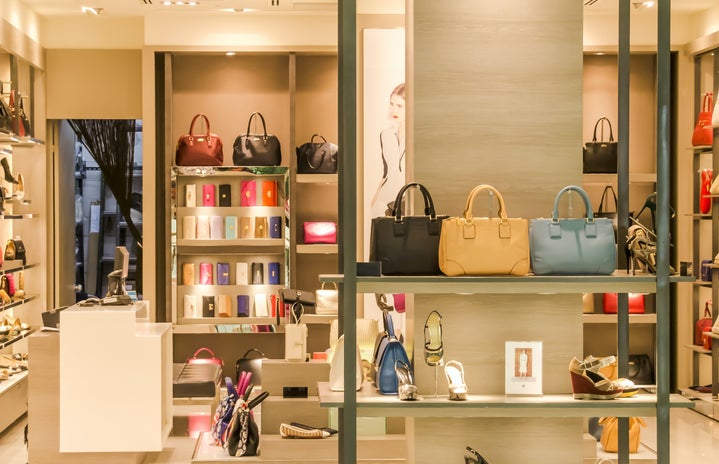Welcome to Episode 3 of Three Changes a Week: your weekly update on how to save the planet.
Fast fashion is killing the planet.
Our society currently perpetuates a throw-away culture of more and more consumption, of cheap clothes that soak up water and fossil fuel supplies like a sponge, are made with cheap and dodgy labour and then go into landfill after ten uses.
Convenience and price, is, as always, placed over the interests of the planet.
Stacey Dooley’s new documentary series on fast fashion has thrown the issues with the sustainability of fashion into the limelight. Our buying habits need to change for the better – and like with every issue, they need to do this fast.
In this article I will provide you with some ideas of where and how to shop in ways that are much more beneficial to the planet than Primark or Amazon. I’m not saying these should never be used – I need something for a Halloween costume that I couldn’t find elsewhere than Amazon, so I bought it – but this doesn’t mean everyone should do it every day.
We need to buy smarter, and buy less. Buying quality clothes, or getting stuff second hand, has a massive impact on the planet. If one million people bought their next item of clothing second hand, we would save 6 million kilograms of carbon pollution from entering the atmosphere according to this charity.
1. BUY BETTER NOT MORE
Ease: *****
Cost: will cost you more per item – but you’ll buy less so little extra overall
The first course of action is don’t buy cheap shit. Choose pieces with good quality materials, such as 100% cotton t-shirts over the cheapest polyester ones. These, at least, will last longer and not end up in landfill quite so quickly. Only buy pieces that you know you love and will wear multiple times; not only wear once for one specific party and then never be seen in again – or that you never even wear at all. If something does need to be disposed of, donate it to a charity shop or put it in a clothing recycling bank, not the bin.
Also, think about buying from more sustainable brands, or brands that are taking steps to reduce their environmental impact. H&M’s sustainable range is an example of a high street shop doing just that, but recently a whole host of ‘eco brands’ have been popping up in adverts, saying that they are the next step in the rejection of fast-fashion. Whether this is true or not, I don’t know, but it might be worth a look.
Because you are spending more per item, you will probably end up being less clothes. You can spend time choosing key pieces that you like and will re-wear again and again, and will be less likely to have unused clothes that you then want to throw out as useless.
Or, if you cannot face ditching your shopping addiction, check out my next suggestion….
2. BUY SECOND-HAND WHERE YOU CAN
Ease: ****
Cost: – £ (second-hand is usually cheaper than new)
If you asked me, I’d say the true next step in the eco fashion revolution is returning to second-hand. eBay offers an affordable place to buy clothes which would otherwise have been thrown out, and often pieces are not even really second-hand – worn once or never at all. Some of my favourite eBay buys are a pair of real Converse, basically new, for £3, and worn-once Regatta raincoat for £8. If you are ready to put in a little bit of effort – and who doesn’t when shopping anyway – eBay will reveal a whole host of hidden gems.
However, second-hand clothes can also be found in charity shops or second-hand stores like Exeter’s Sobey’s Vintage Clothing or can be purchased at vintage clothes fairs, which are growing exponentially in popularity. I discovered these last year, and cannot get enough. There are two forms: a fair with lots of different brands of stalls, like Lou Lou’s Vintage Fair (where I purchased my all-time favourite pair of jeans), or vintage kilo sales, like this one, which allow you to buy clothes by weight and are therefore very cheap – tops usually come in at under a fiver, and it’s much more fun than Primark.
3. SWAP, BORROW, RE-USE
Ease: *****
Cost: – ££
The easiest and cheapest way to resolve our planet’s fashion emergency is to actually use the clothes we already have. As above, only buy things you know you will re-wear, and think about ways you can re-style (or even re-make, if you’re crafty) your existing clothes so that you can get more use from them.
Are you a student living in a shared house? Consider discussing with your friends whether they would be happy for you to share clothes from time-to-time, if they haven’t already offered. Lend them your clothes so that everything gets used and they, too, don’t buy more clothes they don’t need. Siblings at home? Whenever I go home, me and my sister swap a few items of clothing so that our wardrobes are being regularly switched up even when we can’t lend as I’m away. No cost to us or the environment!
Made these changes or already doing them? Post a picture to Instagram or Twitter and tag it to #3changesaweek to spread the word!


